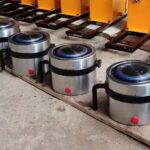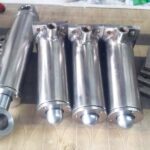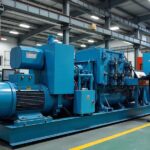Fabrication Work in Mechanical Engineering
Fabrication in mechanical engineering is the process of creating or assembling mechanical components or structures from raw materials. It involves a wide range of techniques and equipment, depending on the specific needs of the project. Fabrication is a process that involves constructing items from various parts using a variety of materials and processes. In mechanical engineering, fabrication is the process of creating the parts and components that mechanical engineers use to build their tools and machines.
Common fabrication methods include:
- Machining: This involves removing material from a workpiece to create a desired shape or size. Techniques like milling, turning, drilling, and grinding are used.
- Welding: This involves joining two or more pieces of metal by melting the edges and fusing them together. Common welding processes include arc welding, gas welding, and resistance welding.
- Casting: This involves pouring molten metal into a mold to create a desired shape. Once the metal cools and solidifies, the mold is removed to reveal the finished part.
- Forging: This involves shaping metal by hammering or pressing it into a desired form. Forging is often used to create large or complex components.
- Sheet metal fabrication: This involves working with thin sheets of metal to create components such as panels, ducts, and enclosures. Techniques like cutting, bending, and forming are used.
Fabrication is a critical aspect of many mechanical engineering projects, from the production of simple components to the construction of large-scale structures. The choice of fabrication method depends on factors such as the material being used, the desired shape and size, and the required level of accuracy and precision.






